‘One step forward, two steps back’
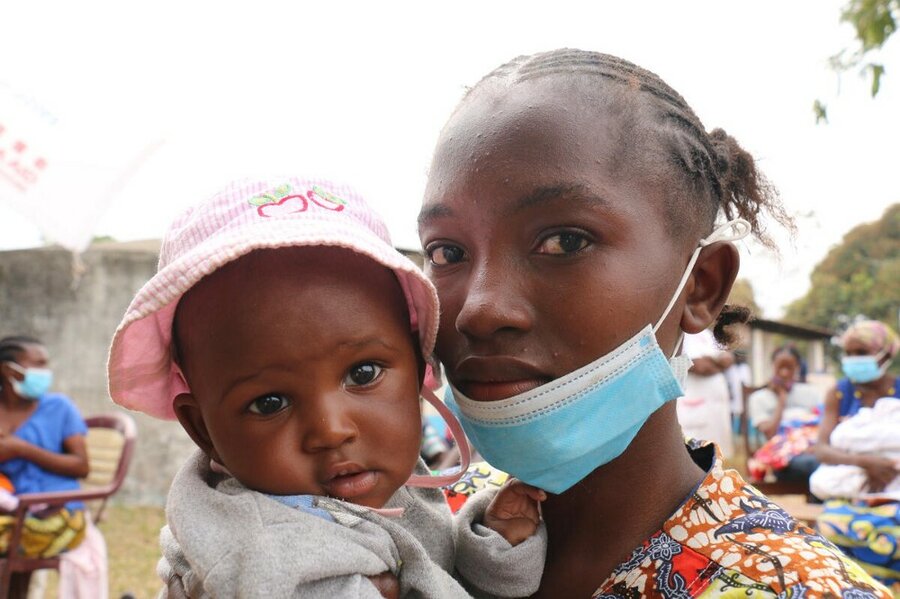
Sephora, aged 18, with her daughter at a WFP health centre in Brazzaville in the Democratic Republic of Congo, run with funding from China— the organization’s Common Services assists humanitarian partners transporting staff and cargo including PPE, around the world. Photo: WFP/Alice Rahmoun
COVID-19 has impacted transport systems like never before. The global connectedness we’ve come to rely on to move people and goods around the world ground to a halt as governments raced to stop its spread.
WFP stepped up to help. With thousands of tons of health and humanitarian cargo and over 25,000 passengers now transported, below four WFP staff recall how they dealt with the onset of the coronavirus crisis.
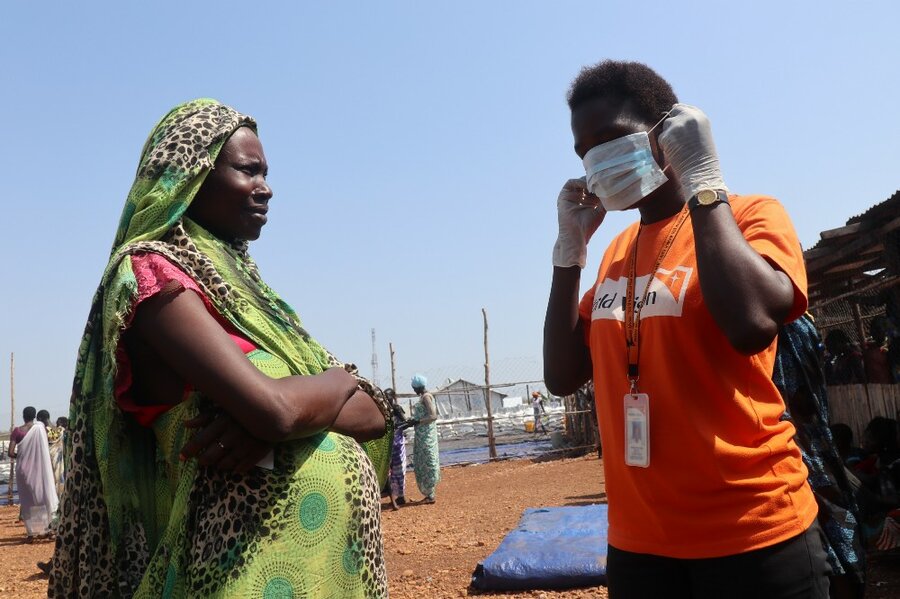
World Vision used WFP’s Common Services to fly hundreds of millions of masks and gloves from China to hubs in Panama and Dubai before shipping to countries such as South Sudan, pictured. The organization also made use of WFP’s Aviation Passenger Service to fly 135 staff either back to their duty stations or home following the shutdown of commercial flights around the world. Photo: World Vision
Stephen Cahill, Director of Logistics
We didn’t foresee that the virus would spread as quickly. Being in Italy, we saw firsthand what the virus could do, and having headquarters shut down had a major impact on our operations.
All our scenarios post-Ebola [outbreak in West Africa in 2014–16] looked at the fact that this pandemic would affect those countries with poor health systems. In reality, it was the exact opposite — it hit industrially advanced countries with much more developed health systems just as hard.
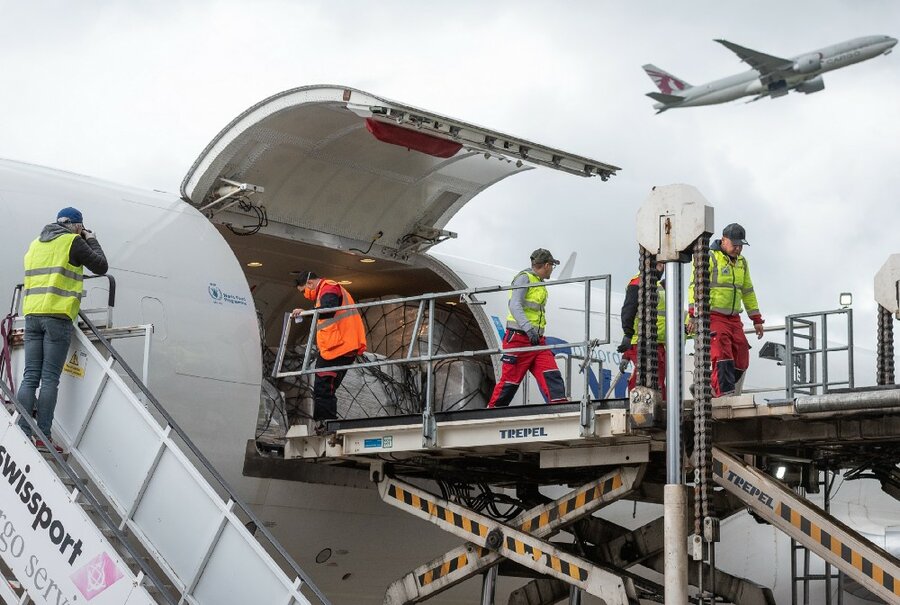
A WFP-contracted Boeing 757 at the newly established Global Humanitarian Response Hub in Liège, Belgium taking PPE to Burkina Faso and Ghana, on behalf of UNICEF and the International Committee of the Red Cross. Photo: Pixel Prod
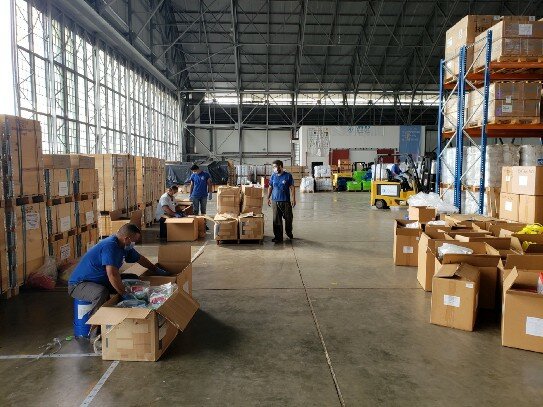
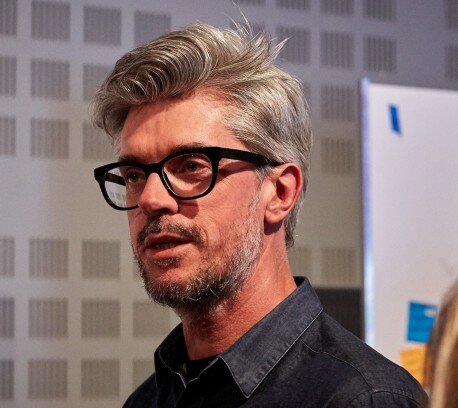
Left: Staff at WFP’s Panama hub prepare shipments of PPE on behalf of the World Health Organization. Photo: WFP/Francisco Garrido. Right: WFP’s Stephen Cahill. Photo: WFP/Logistics Cluster
That was kind of frightening. By March, April, when we saw the infection rates and when airlines started to shut down completely, we knew we were in trouble. We knew we needed to act.
The hardest part of any operation, and this applies to all emergencies, is not actually getting anything to move, it’s all the preparedness work beforehand. And reassuring partners that they can rely on WFP — we have around 700 between the Logistics Cluster, Emergency Telecommunications Cluster and the Food Security Cluster.
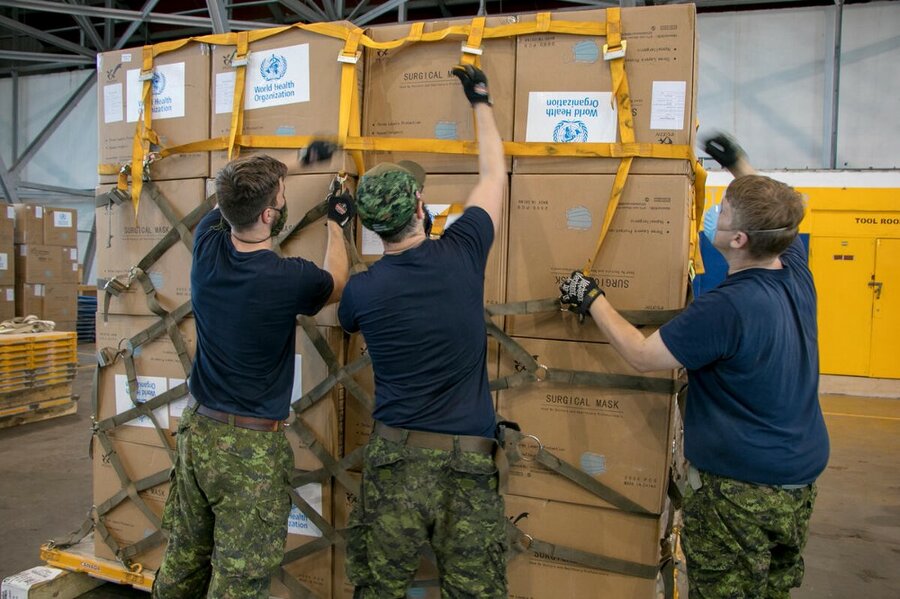
A Royal Canadian Air Force plane is loaded in at the UN Humanitarian Response Depot with supplies bound for Latin American countries, in July. Photo: WFP/Elio Rujano
It’s making sure that you’re that strong face, that you’re able to show that you have a plan and able to very clearly communicate it. There was a huge amount of sleep lost, trying to work out what we could do, working with very little information and trying to take some very broad decisions.
The Liege and Guangzhou hubs were completely new — at the time about 80 percent of the cargo was coming from China. To set that up from scratch where we had no supply chain presence before was quite a heavy lift. We also used the existing UNHRD hubs and we set up regional hubs in Johannesburg and Addis Ababa.
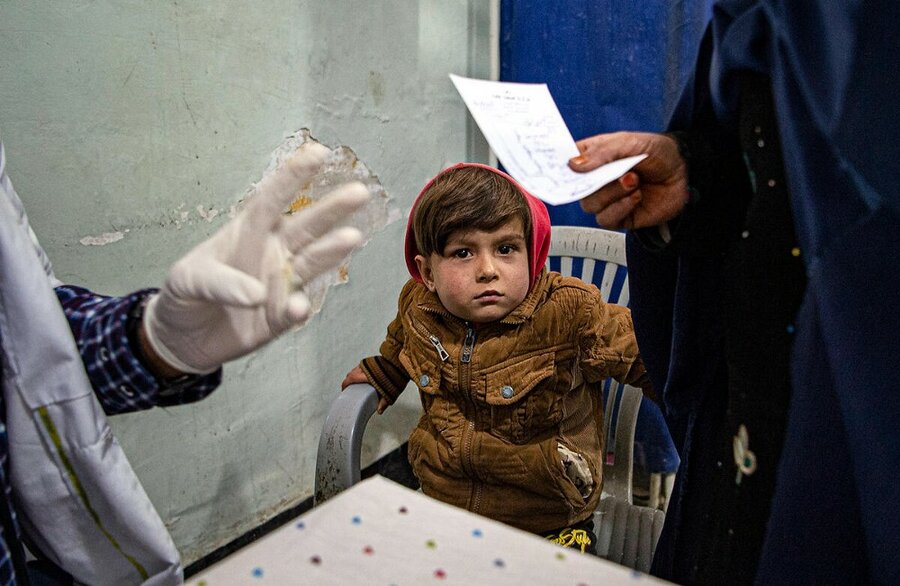
Personal protection equipment transported by WFP Common Services has been key to the response to the coronavirus pandemic. In the photo: a hospital providing nutrition assistance in Chaharikar, Parwan Province, Afghanistan. Photo: Massoud Hossaini
I think our greatest success was when we turned on the switch for the Emergency Service Marketplace. This was a major milestone for us. This new online platform allowed all partners to book cargo from all those hubs to anywhere in the world.
Our message throughout has been very strong — we said that we wouldn’t forget anybody. These common services were not only for big UN agencies — they’re for everybody. We said that no cargo would be left behind. And we did that.
Kanthum Duplessis, Aviation Officer, Southern Africa
I joined WFP at the end of March, from a commercial airline that I flew for.
The aim was to set up an Aviation Hub in Johannesburg, serving the southern region of Africa to complement already established hubs in Addis Ababa and Accra.
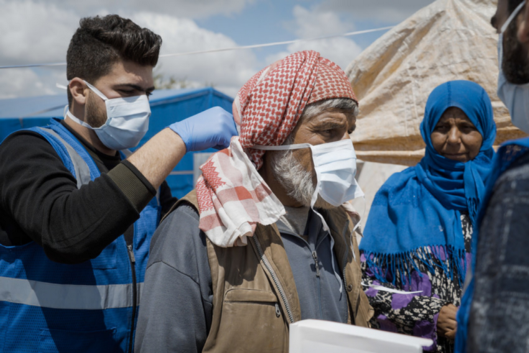
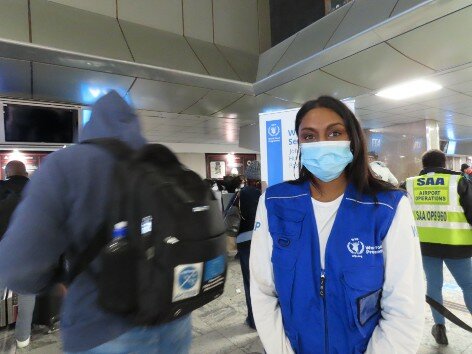
Left: With operations in over 30 countries, Islamic Relief is one of the WFP partners that have benefitted from WFP’s Common Services to enhance the safety staff and assisted populations. Photo: Islamic Relief. Right: In Johannesburg, Kanthum helped set up passenger operations. Photo: WFP
It was challenging. There was no infrastructure. We were in complete COVID-19 lockdown. Everything was shut down. Aviation had come to a complete halt. All the borders were closed. Curfews were in place. You could leave home only for essentials. At the beginning, COVID-19 was an unknown, rapidly-spreading pandemic and global health authorities were still identifying protocols, what high risk meant and how it was spread, how to protect ourselves. All these things were not yet defined and that made trying to make our case for a hub difficult.
The chief complexity was engaging with the Government of South Africa on where the hub would be launched as well as with all the other countries on the network. We wanted to fly in a restricted environment so all our humanitarian aid, resources and personnel could reach countries where borders were closed. Aid workers were stuck all around the world and we needed to get them to the places where they were needed most.
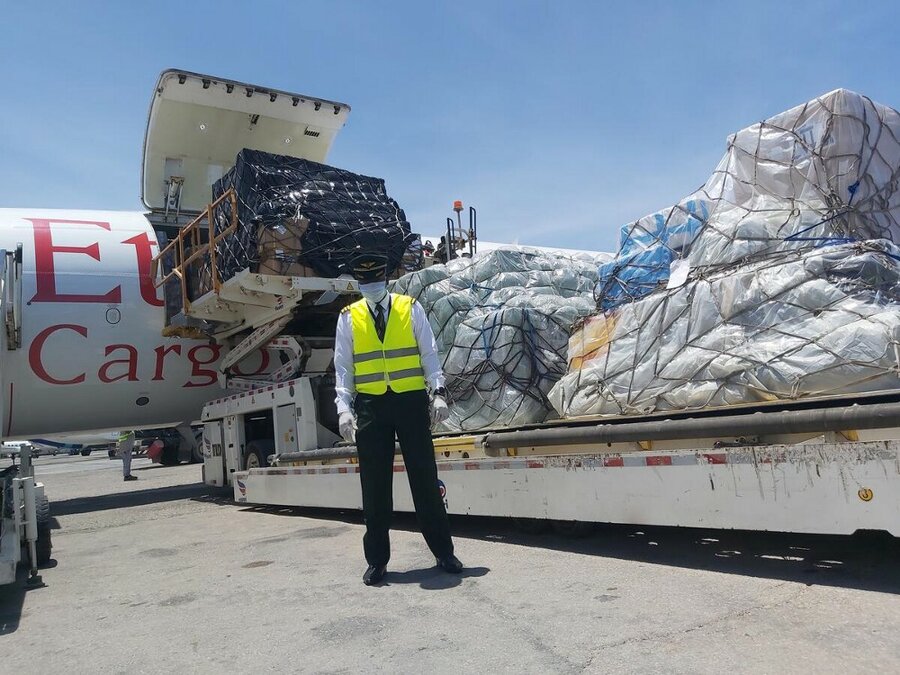
Medical supplies are unloaded in Mogadishu, Somalia, from a UN ‘Solidarity Flight’ from the WFP Humanitarian Air Hub in Addis Ababa. Photo: WFP/Erik Forsman
And that was the crux of it — approval from South Africa, to get officials on board and say “Oh, we appreciate what you’re doing here and we want to be involved”, all while being so understandably cautious and apprehensive about the pandemic itself in order to protect their citizens.
By June we had established three hubs on the continent, acting as connection points to bring passengers into and out of regions before they connected with flights to their final destinations. The network was designed to optimize shorter flights into South Africa and then onto Addis Ababa, where international commercial flights were available so people could then reach Europe, the US and Asia.
Lila Ricart, Logistics Cluster Logistics Officer
When Europe was going out of lockdown around June, the Latin America and Caribbean region saw their lockdowns extended.

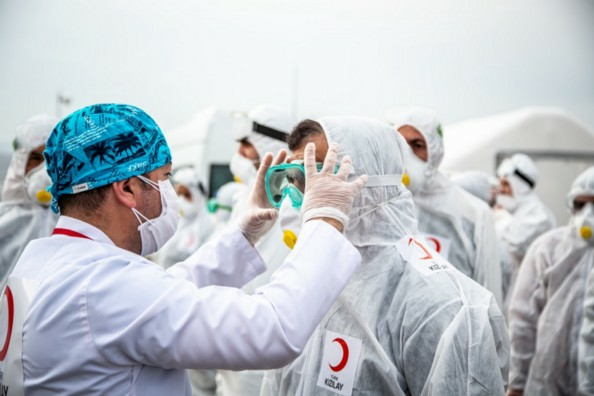
Left: Lila Ricart. Right: WFP’s Common Services transported for more than 60 partners such as the International Federation of the Red Cross and Red Crescent. Photos: WFP (L) and IFRC (R)
Supporting the Logistics Cluster, I was sent to Mexico — WFP doesn’t have an office there but the UN has a country team and they hosted me to coordinate the movement of humanitarian personnel in and out of the region. Mexico City was one of the only places where commercial flights were still operating in the region.
Mexico is a country where there’s a strong UN presence focusing on development projects and migrant response activities, not humanitarian responses. My role was about creating a channel of communication with the actors there, with the UN country team and with the government of course, to facilitate emergency flights for humanitarian staff.
What is the Logistics Cluster? A community of partner organizations working together to ensure the most efficient logistics response to a humanitarian crisis. As the Cluster Lead Agency, WFP has a mandate to create the space for all actors — local actors, international actors and national disaster management agencies — to sit (physically or virtually) together and find solutions all together for logistics gaps and bottlenecks.
As Logistics Officers for the Logistics Cluster we are facilitators but also mediators, trying to create a space where people who usually don’t talk to each other start working together to save more lives and make best use of the funds allocated.
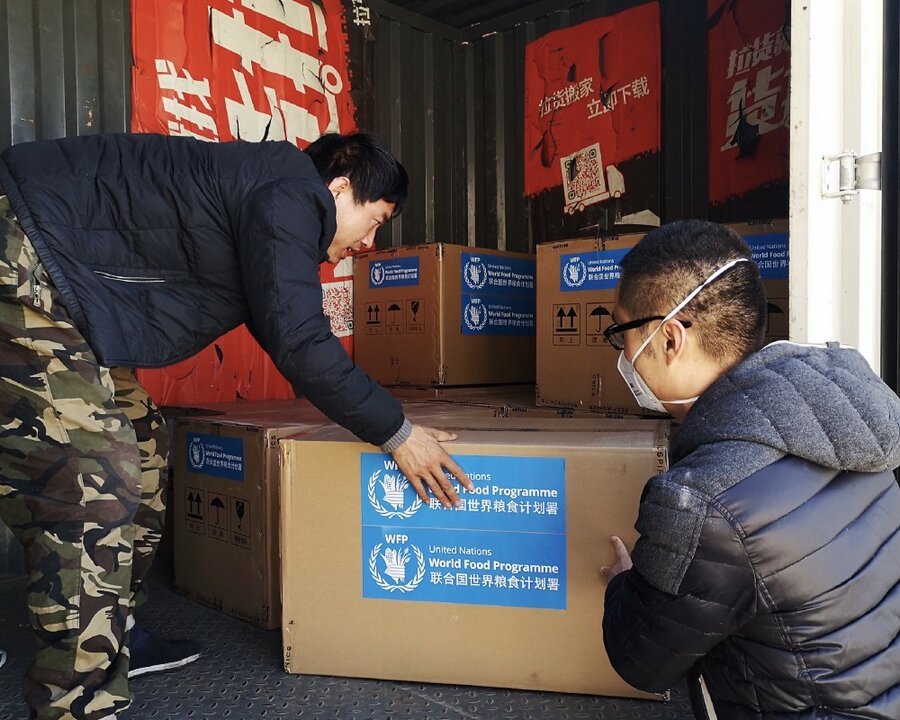
The first batch of WFP supplies, including 50 sets of non-invasive ventilators, reaches Wuhan on 13 March. Photo courtesy of Yingshi Zhang
I was part of the response to Cyclone Idai in Mozambique in March 2019 and it was totally different — when you are physically in the middle of things, you have this adrenaline that just keeps you running.
For the brain, the COVID-19 pandemic was sending very contradictory signals. It was very difficult to find the right balance between stress and rest — working from the comfort of my home, answering requests from all over the world.
Looking back, I would like to go to Mexico or invite colleagues there to do a workshop on lessons learned because it was unprecedented.
Ilse Larkin, Supply Chain Officer
At the outset it was one step forward, two steps back — every time you overcame an obstacle, another one would materialize, like a tennis-ball machine. We were doing 16 hours a day, nonstop, trying to overcome these challenges.
We were based in the World Health Organization’s headquarters in Geneva — WHO accounted for more than 50 percent of the cargo requiring WFP’s supply chain support. Our focus was on developing capacity-strengthening initiatives with ministries of health in developing nations.
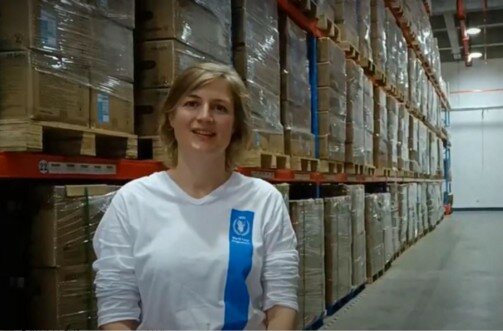
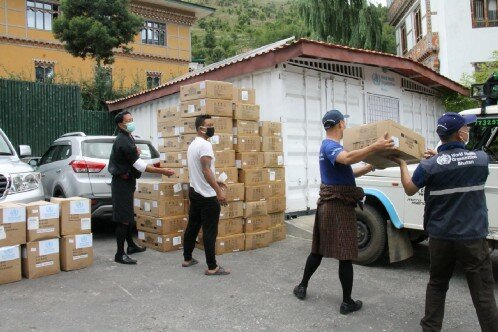
Left: Ilse Larkin. In WFP’s 2020 Common Services transported cargo 171 countries around the world, including to Bhutan, above. Photos: WFP
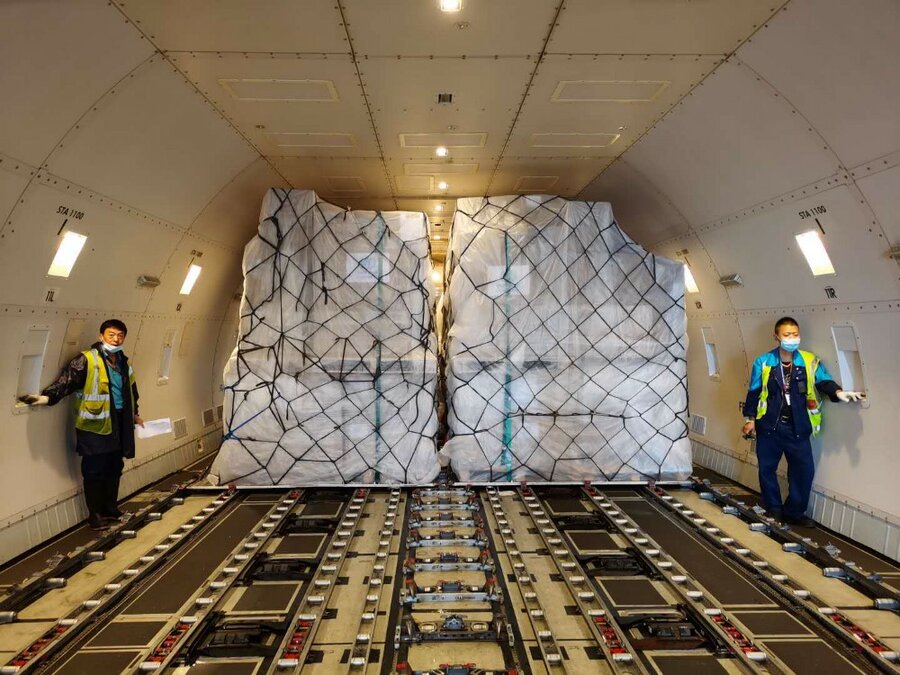
Left: Ilse Larkin. In WFP’s 2020 Common Services transported cargo 171 countries around the world, including to Bhutan, above. Photos: WFP
That was ultimately the start of setting up hubs, expanding our existing hub network. That’s how I ended up in China where we set up the Guangzhou hub from scratch.
What kept me up at night was knowing we are sat here in China with tons and tons of cargo that is fit for purpose, that people urgently need, but you simply haven’t got the ability to get it out.
Destinations were applying stricter and stricter processes for accepting cargo.
Within a matter of weeks, though, we set up a customs-compliance portal and we never had any issues with getting cargo approved, exported and dispatched from China, even though the standards were tremendously high.
Things are a lot more stabilized now with commercial flights having resumed but there are still airports across the globe that are closed, specifically on island nations such as East Timor, for example — we still can’t reach it by air.
How has our cargo changed? Initially it was relatively easily sourced commodities such as face masks and gloves and face shields.
We’re now more in biomedicine — items like oxygen concentrators, ventilators are far more complex. And once you ship them to hospitals or health centers, it’s about spare parts. So after you do the first round, you make sure that all these countries then have an adequate medical quantity.
I think our collaboration with WHO has been so positive and so collaborative because fundamentally we have collectively tried to achieve the same thing. We dealt with hundreds of suppliers and hundreds of commodities, all in varying degrees complexity. And none of those ever got stuck. They all managed to get delivered.
As a leader in the field of humanitarian logistics, WFP supports over 700 organizations every year with coordination, information and supply chain services including storage and road, sea and air transport through the WFP-managed UN Humanitarian Response Depots and UN Humanitarian Air Service, or through the WFP-led Logistics Cluster.
Thanks to the generous support of its donors including the United States of America, Germany, the United Kingdom and the European Union, WFP has dispatched over 145,000 m3 of critical cargo on behalf of the health and human community as part of the COVID-19 pandemic response.
Learn more about Common Services at WFP
